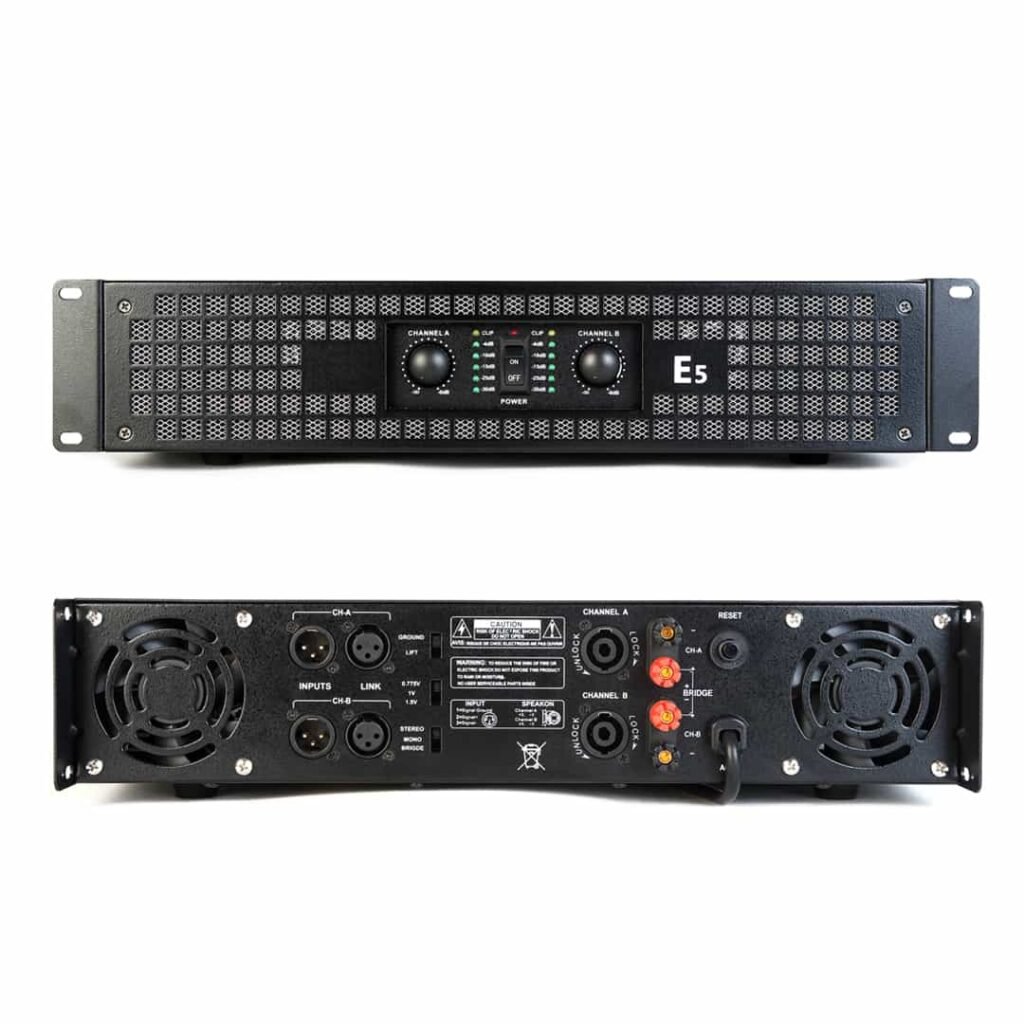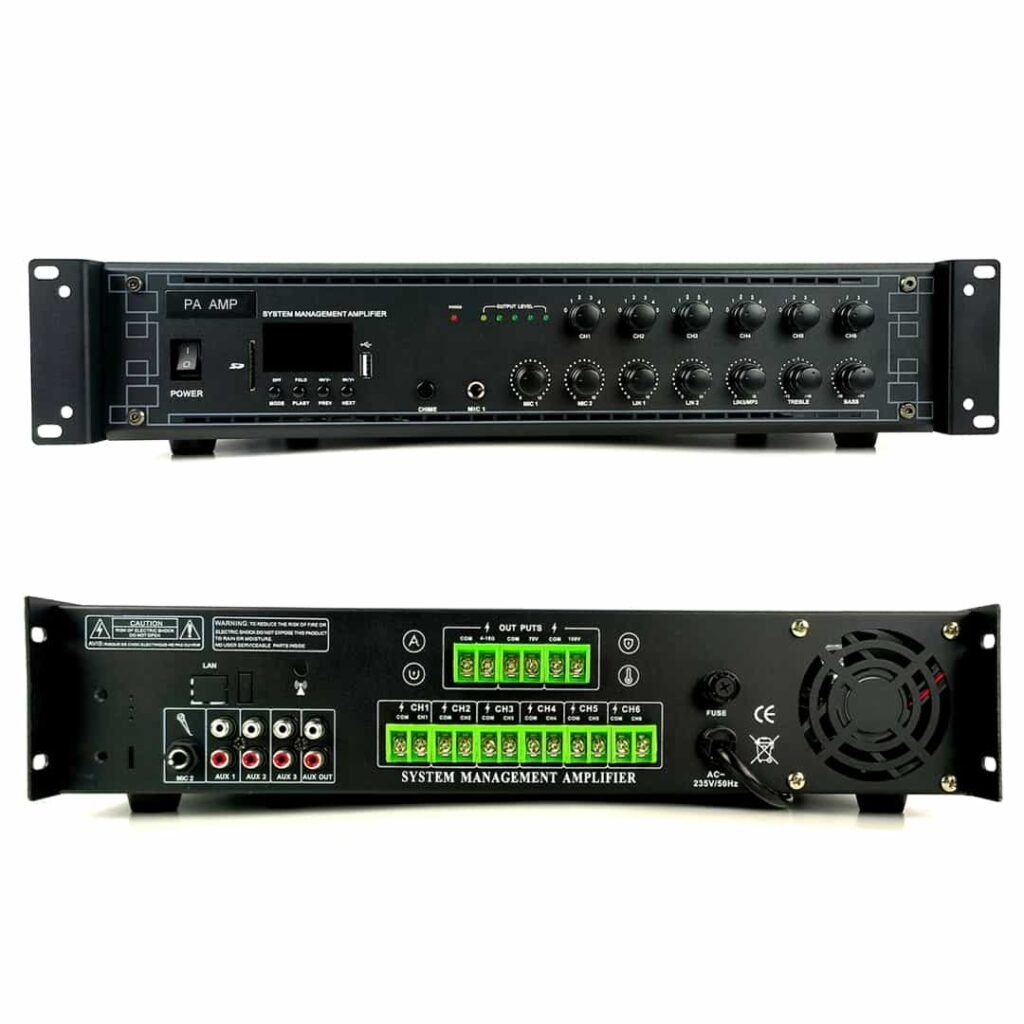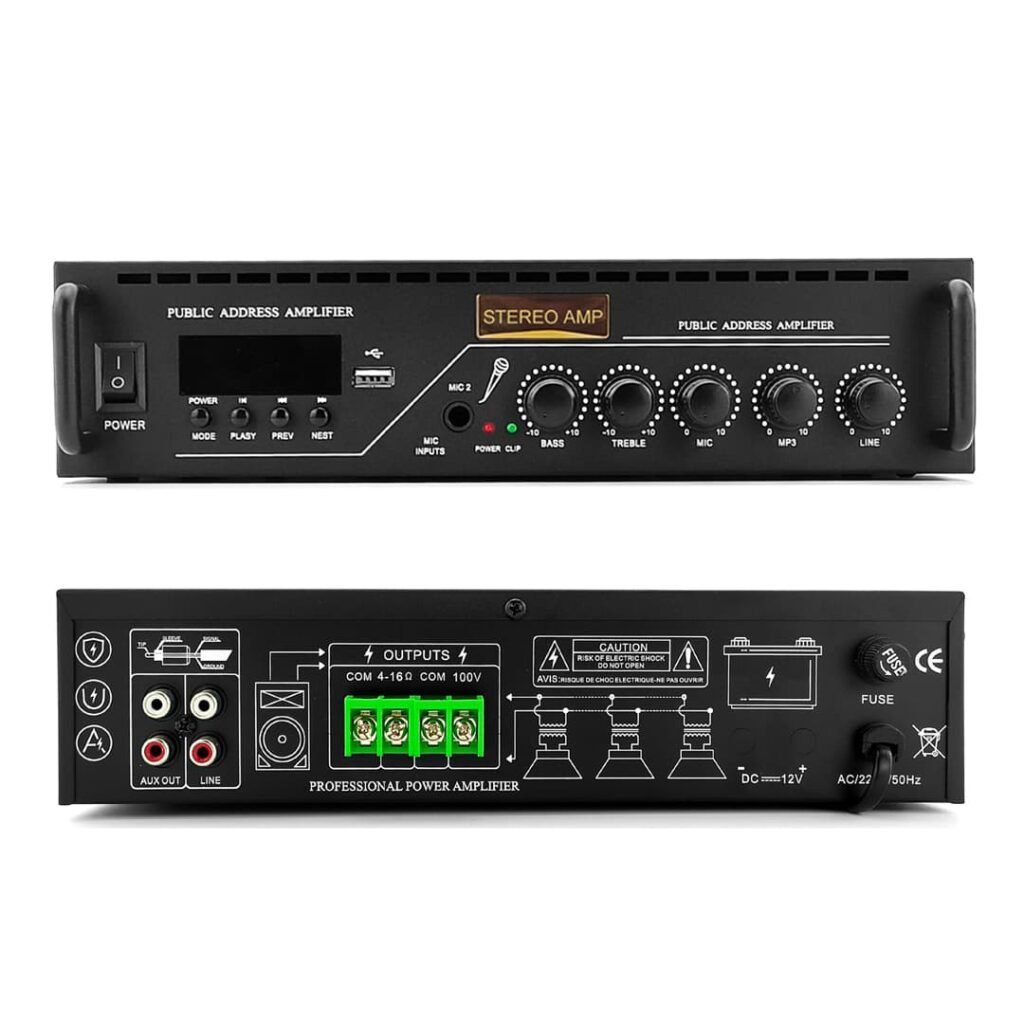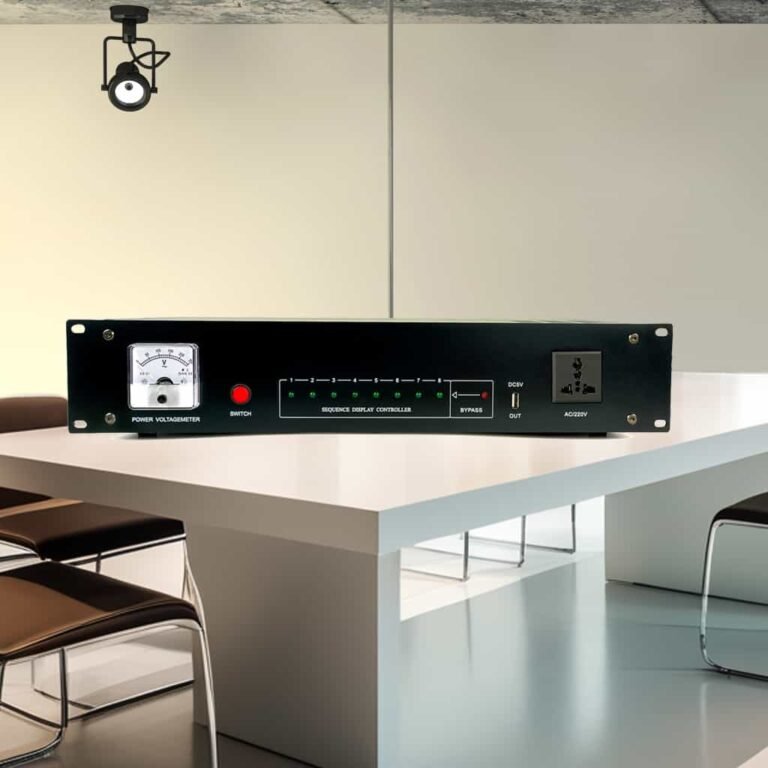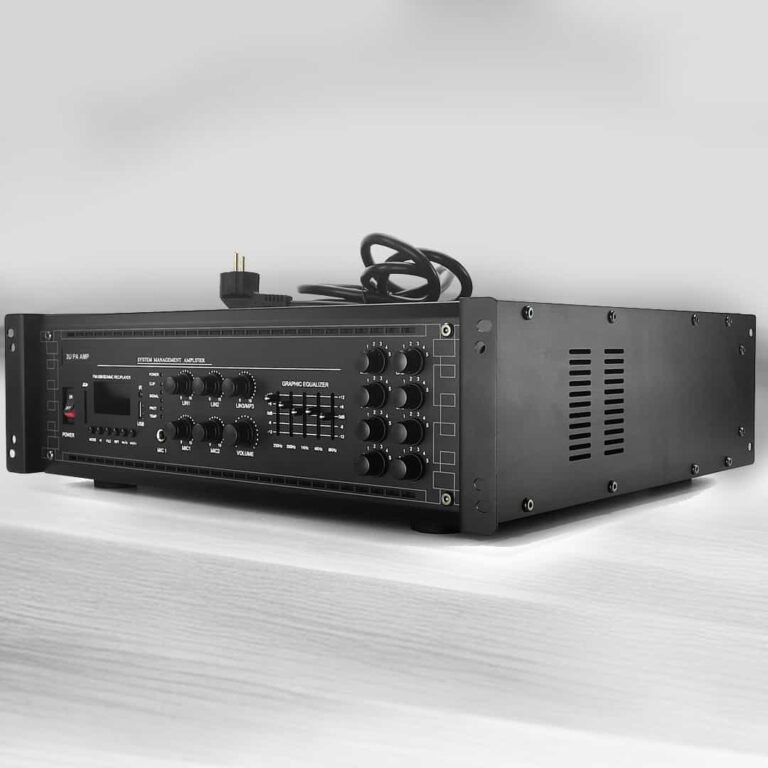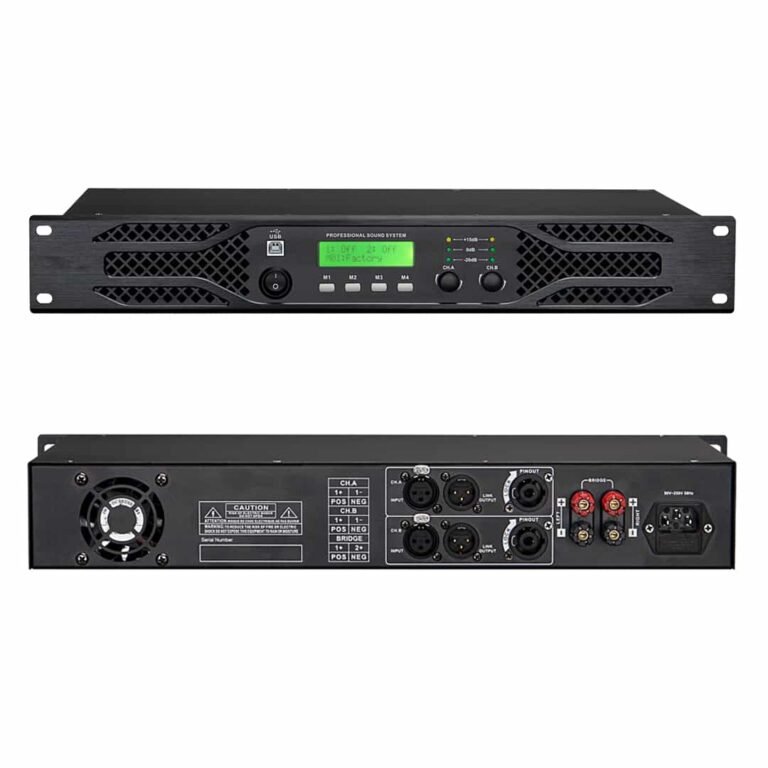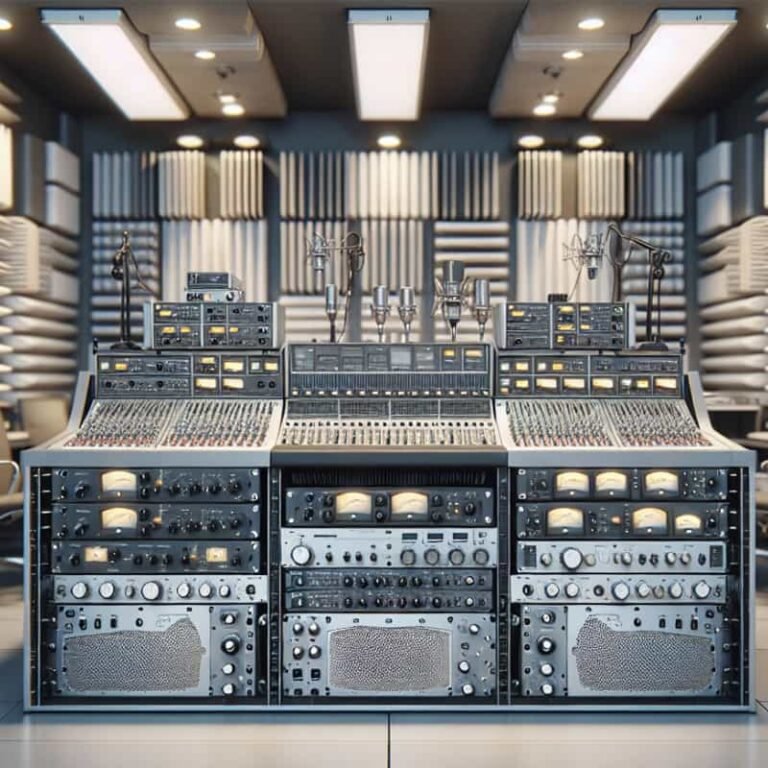Navigating the realm of audio systems can be daunting, with its intricate workings and specialized terminology. Two phrases that can easily cause bewilderment are audio amplifiers and PA systems. Despite their vital roles in producing quality sound, these components have distinct functions and unique characteristics.
The Fundamentals of Audio Amplifiers and PA Systems
Amplification essentially expands the volume and strength of an audio signal, similar to projecting your voice. Whether you’re enjoying music at home or putting on a concert in a large venue, amplifiers play a crucial role in audio systems. However, where do PA systems come into play? In this article, we will explore the distinctions between amplifiers and PA systems.
Discovering the Capabilities and Characteristics of Audio Amplifiers
Definition and Purpose of Audio Amplifiers
Audio amplifiers are essential electronic devices utilized to amplify audio signals, increasing their strength to adequately drive speakers. Their primary function is to improve the audio quality and volume of various equipment, including musical instruments, home theater systems, and stage setups. In professional environments, audio amplifiers are crucial for producing accurate and robust sound output. They offer the necessary power and stability to achieve precise sound reinforcement in live concerts, recording studios, and theatrical productions. Professionals heavily rely on top-notch audio amplifiers to accurately replicate the original signal without any distortions or disruptions from external noise sources.
Types of Audio Amplifiers
There are multiple types of audio amplifiers available, each specifically designed to meet the unique needs and demands of professionals across various industries. One such type is the professional stage amplifier, which delivers a high level of power output to efficiently and effectively drive loudspeakers.
On the other hand, the home amplifier offers a lower power output, perfect for driving personal speakers. These amplifiers incorporate cutting-edge technology, such as Class-D or Class-AB designs, to ensure precise audio reproduction and minimize distortion.
Another type is the distribution amplifier, also known as a PA amplifier used to split an audio signal into multiple outputs without compromising its original quality. This type is commonly utilized in sound reinforcement systems to connect numerous speakers.
Key Features of Audio Amplifiers
Audio amplifiers play a crucial role in any top-notch audio setup as they provide the necessary power to drive speakers and ensure superior sound quality. One notable feature of these amplifiers is their impressive power output, typically measured in watts, such as 200W, 400W, 600W,800W, 1000W,1500W, 2500W, and 3000W. This high-power capability allows for the amplification of audio signals without any distortion or clipping, resulting in clear and accurate sound reproduction.
Moreover, an important specification to consider in audio amplifiers is their frequency response range, which indicates the full spectrum of frequencies they can accurately reproduce. These amplifiers also offer a variety of input and output options, including balanced XLR connections and speaker impedance matching capabilities, making them easily adaptable to complex audio systems.
Additionally, professional amplifiers are equipped with advanced protection measures like thermal overload protection, short-circuit protection, and DC offset detection, ensuring the safety of both the amplifier itself and any connected equipment from potential damage.
| Power Amplifiers Types | Typical Wattage | Work Volt | Typical Height | Typical N.W. | Distance between Speakers | Applications |
|---|---|---|---|---|---|---|
| Pro Power Amplifers | 250~5500W | AC110/220V | 2U/3U | 10~40KG | Short Distance | Stage Performance |
| PA Amplifiers | 100~2500W | AC110/220V | 1.5U/2U/3U | 5-30KG | Long Distance | Public Broadcasting |
| Small Amplifiers | 5~100W | AC110/220V;DC12V | 1.5U or Below | <3KG | Short Distance | Home |
PA Systems: Unraveling the Components and Capabilities
What is The Public Address System?
Public address systems, also known as PA systems, are electronic sound amplification systems used to amplify and distribute sound to a large or distant audience. These systems consist of microphones, PA system amplifiers, loudspeakers, and other audio equipment that work together to deliver clear and audible sound to a large area.
Main Components of a PA System
A public address system, or PA system, consists of essential components that work together to effectively deliver amplified audio to a large audience. These components include a mixer, PA amplifiers, speakers, signal processing equipment, and necessary cables, connectors, and stands.
At the core of a PA system is the mixer, which plays a crucial role in combining, adjusting, and balancing multiple audio sources before sending them to the speakers. This allows for a seamless and cohesive audio experience for the audience..
To ensure that the audio is clear and loud enough to reach a large crowd, PA amplifiers are used to strengthen the low-level signals from the mixer. These amplifiers efficiently drive the speakers, which then reproduce the audio with clarity and projection across a wide area.
In some cases, signal processing equipment such as equalizers may be incorporated into the PA system to optimize frequency response and minimize feedback. This ensures that the audio quality remains consistent and free from any unwanted noise or distortion.
Lastly, the proper connection between components is facilitated by the use of cables, connectors, and stands. These not only ensure the smooth operation of the system but also allow for flexibility in positioning equipment according to the specific requirements of the venue.
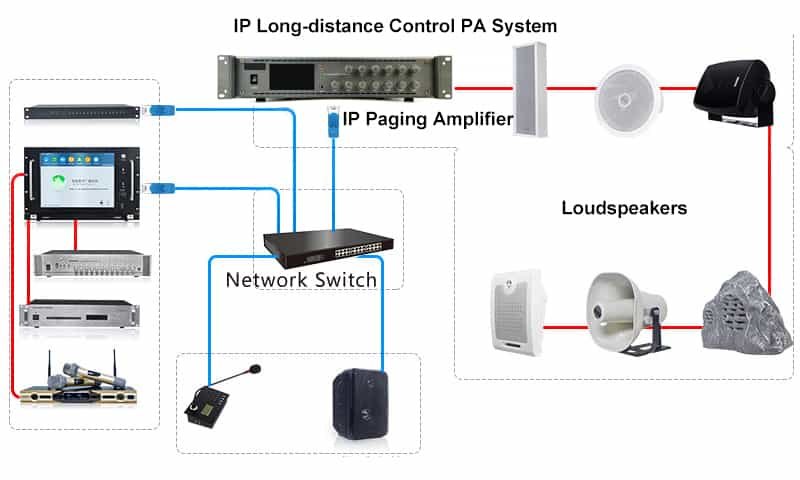
Features of PA Systems
Amplification and Clarity of Sound
The primary function of a PA system is to amplify sound and make it audible to a large number of people. The system consists of speakers, public address amplifiers, and microphones that work together to produce clear and crisp sound. The speakers are designed to project sound to a wide area, ensuring that everyone in the audience can hear it. The amplifiers help to boost the sound signal, making it loud enough to reach every corner of the venue. The microphones are used to capture the voice of the speaker, singer, or performer and transmit it to the speakers. The combination of these components ensures that the sound is amplified and clear, making it easy for the audience to hear and understand.
Wireless Connectivity
In today’s digital age, wireless connectivity has become a necessity. The PA system has also evolved to incorporate this feature, making it easier to set up and use. Wireless microphones and speakers eliminate the need for long cables and wires, which can be hazardous and inconvenient to set up.
Control and Monitoring
Another important feature of a PA system is its control and monitoring capabilities. Most modern systems come with a control panel that allows the operator to adjust the volume, balance, and other audio settings. This feature is particularly useful in large events where different speakers or performers may have different sound requirements. The control panel also allows the operator to monitor the sound levels and make adjustments accordingly, ensuring that the sound remains clear and consistent throughout the event.
Integration with other Audio Systems
PA systems can also be integrated with other audio systems, such as recording devices or mixers. This feature allows event organizers to record the event or mix the sound for a live broadcast. It also enables them to add background music or sound effects to enhance the overall experience for the audience.
Differentiating Audio Amplification and Public Address Systems
Use Purpose
One of the main differences between audio amplifiers and PA systems is their purpose. While amplifiers are primarily used for music and sound reinforcement in smaller settings, PA systems are designed for larger venues and events where sound needs to be projected to a larger audience. PA systems are also equipped with additional features such as microphones, speakers, mixers, and equalizers, which are not found in amplifiers.
Power Output
Another key difference is the power output. Pro audio amplifiers are designed to provide high power output to drive speakers, while PA systems have a lower power output as they are used in conjunction with multiple speakers. Amplifiers typically have a power output ranging from 20 watts to several hundred watts, while PA systems can range from a few hundred watts to several thousand watts depending on the size of the venue.
Use Setup
In terms of setup, pro amplifiers are relatively simple to use and require only a few connections between the audio source and the speaker. On the other hand, PA systems are more complex and require multiple connections and configurations to ensure proper sound distribution. PA systems also require additional equipment such as mixers and equalizers to ensure the sound is balanced and clear.
Sound Quality Difference
When it comes to sound quality, concert amplifiers are known for their superior sound fidelity. They are designed to provide a clear and accurate reproduction of the sound source without any distortion. PA systems, on the other hand, focus more on projecting sound to a larger audience, and the sound quality may not be as precise as amplifiers.
Purchasing Cost
Cost is another significant difference between speaker amplifiers and PA systems. Amplifiers are relatively more affordable compared to PA systems, which can be quite expensive due to the additional equipment and features they offer. This makes amplifiers a popular choice for individual musicians and small venues, while PA systems are more suitable for larger events and venues.
The Final Conclusion
In conclusion, audio amplifiers and PA systems serve different purposes and have distinct features that make them suitable for different settings. Amplifiers are ideal for musicians and sound enthusiasts looking to enhance sound quality, while PA systems are more suitable for public spaces and events where sound needs to be projected to a larger audience. Both are essential in the world of audio technology and have their unique advantages.

